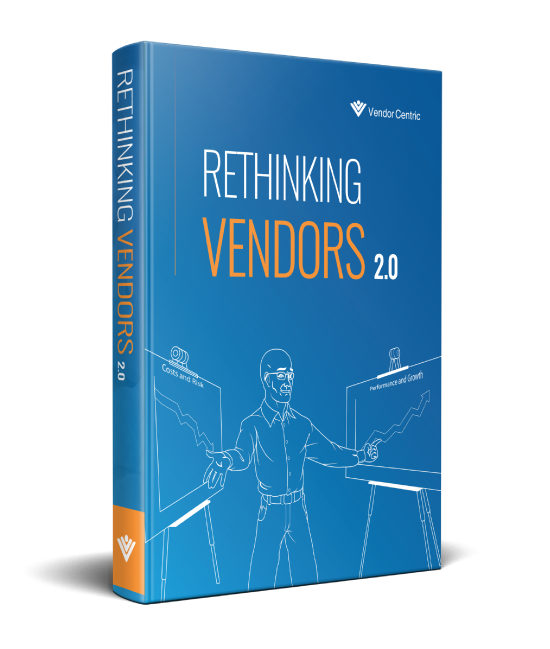When it comes to building a high-performing vendor management office (VMO), structure matters. How you organize roles and responsibilities across your organization has a direct impact on your ability to manage vendor risk, performance, and compliance effectively.
One of the foundational decisions to setting your VMO up for success is choosing the right operating model. Should vendor management be centralized under one team? Distributed across business units? Or something in between?
There is no one-size-fits-all answer. But the model you choose will shape how you govern, engage, and manage your vendor relationships. Here’s how to think through the decision.
What Is a Vendor Management Office?
The Vendor Management Office (VMO) is the centralized business function that defines how vendors should be managed across the organization. It sets the strategy and framework, establishes and maintains the infrastructure, and creates the conditions for consistent, accountable, and high-performing vendor relationships.
You can read more about the foundational role of the VMO in this blog: What is the Role of the Vendor Management Office?
Three Types of VMO Operating Models
In the context of a vendor management office, the operating model defines the level of responsibility the VMO assumes for managing vendors across the organization. It sets the boundaries for which responsibilities are centralized and managed within the VMO and which are distributed across the business.
Choosing the right operating model is critical because it ensures the VMO aligns with how your organization is structured and operates. When the model fits your culture, workflows, and decision-making processes, it’s far easier to integrate vendor management practices in a sustainable way.
There are three common types of VMO operating models, each with a different approach to allocating responsibility: centralized, decentralized, and hybrid.
Centralized Model
In a centralized model, a dedicated VMO team not only leads the overall vendor management program but also takes direct ownership of one or more critical functions. These typically include areas like risk assessments, onboarding, risk monitoring, and performance monitoring.
This model works well when consistency, control, and enterprise-wide visibility are top priorities. It allows for tight alignment with compliance requirements, regulatory frameworks, and internal governance standards.
Pros
- Consistent processes, documentation, and vendor oversight across the enterprise
- Clear accountability for managing risk and performance
- Easier to maintain compliance with both internal policies and external regulations
Cons
- Can be perceived as overly controlling or slow to respond to business unit needs
- Requires investment in centralized staff and training
- May face resistance from departments used to managing their own vendor relationships
This model is often favored by highly regulated organizations (such as banks, insurers, or healthcare systems) and those with complex vendor ecosystems requiring tight control.
Decentralized Model
In a decentralized model, each business unit or department manages its own vendor relationships with minimal central oversight. The VMO may not even be a standalone department in this model; instead, it may operate as an extension of another function, such as procurement or finance.
In this model, the VMO’s role is primarily to provide general guidance and best practices, but it lacks the authority or mandate to enforce compliance. Business units are largely left to determine how they select, manage, and monitor their vendors based on their individual needs. The VMO may offer templates, training, or informal support, but participation is generally voluntary.
Pros
- Empowers departments to manage vendor relationships in alignment with their operational needs
- Reduces administrative overhead from a central team
- Facilitates quicker decision-making at the local level
Cons
- Inconsistent processes and documentation across the organization
- Harder to track vendor performance and spend holistically
- Elevated risk of non-compliance with internal policies and external regulations
- Potential for duplicative vendors and missed cost-saving opportunities
Decentralized models are often found in organizations that prioritize speed, flexibility, or localized decision-making—such as startups or businesses with highly independent operating units.
Hybrid Model
The hybrid model combines elements of both centralized and decentralized structures. In this model, the VMO typically functions as a center of excellence—establishing enterprise-wide policies, standards, and tools while providing coaching, guidance, and resources to business units. This support helps ensure that vendor management activities are executed consistently, even though the day-to-day work is often handled at the business-unit level.
In more mature hybrid models, the VMO may also assume direct responsibility for certain functions such as vendor due diligence and oversight of the organization’s most critical or high-risk vendor relationships. In these cases, the VMO partners closely with the business to co-manage those relationships, ensuring alignment with strategic, performance, and risk objectives.
Pros
- Achieves consistency without sacrificing business unit flexibility
- Encourages organization-wide adoption of best practices
- Scales well across different geographies, departments, or service lines
- Provides accountability and compliance
Cons
- Requires well-defined roles and responsibilities to avoid confusion or gaps
- Demands active coordination and communication between the VMO and business units
- Success depends on stakeholder engagement and strong governance
This model is common in mid-sized and large organizations that need to balance enterprise risk management with operational agility. It’s particularly useful in environments with diverse vendor portfolios and varying risk profiles.
How to Choose the Right Model
Choosing an operating model is a strategic decision that must align with your vendor management goals and framework, and the reality of how your business operates. Here are some key factors to consider when evaluating your options:
- Organizational Size, Complexity and Culture: Larger or more complex organizations often require greater structure and consistency, making centralized or hybrid models more viable. Smaller organizations may thrive with a more flexible approach.
- Risk and Regulatory Requirements: If you’re subject to regulatory scrutiny or need to meet strict compliance obligations, a centralized model can offer the oversight and control needed to meet those standards.
- Vendor Management Maturity: Organizations just getting started with vendor management generally find it more practical to begin with a decentralized or hybrid model to establish a foundation with flexibility. As operations mature and the need for greater oversight increases, you can evolve toward a more centralized model. From a change management perspective, it’s generally easier to move towards a centralized model than away from one as you are taking work off of everyone’s plate.
Final Thoughts
There is no one-size-fits-all operating model for a vendor management office. What’s most important is choosing the model that best fits your organization’s structure, culture, and current stage of vendor management maturity. The right model is the one your organization can realistically implement and sustain—not just the one that looks good on paper.




















 Tom is a trusted advisor on procurement and third-party management to organizations across the United States. Having worked with over 120 organizations over his 30-year career, he has a unique ability to bring creativity and discipline to finding solutions for even the most complex challenges his clients face.
Tom is a trusted advisor on procurement and third-party management to organizations across the United States. Having worked with over 120 organizations over his 30-year career, he has a unique ability to bring creativity and discipline to finding solutions for even the most complex challenges his clients face.



